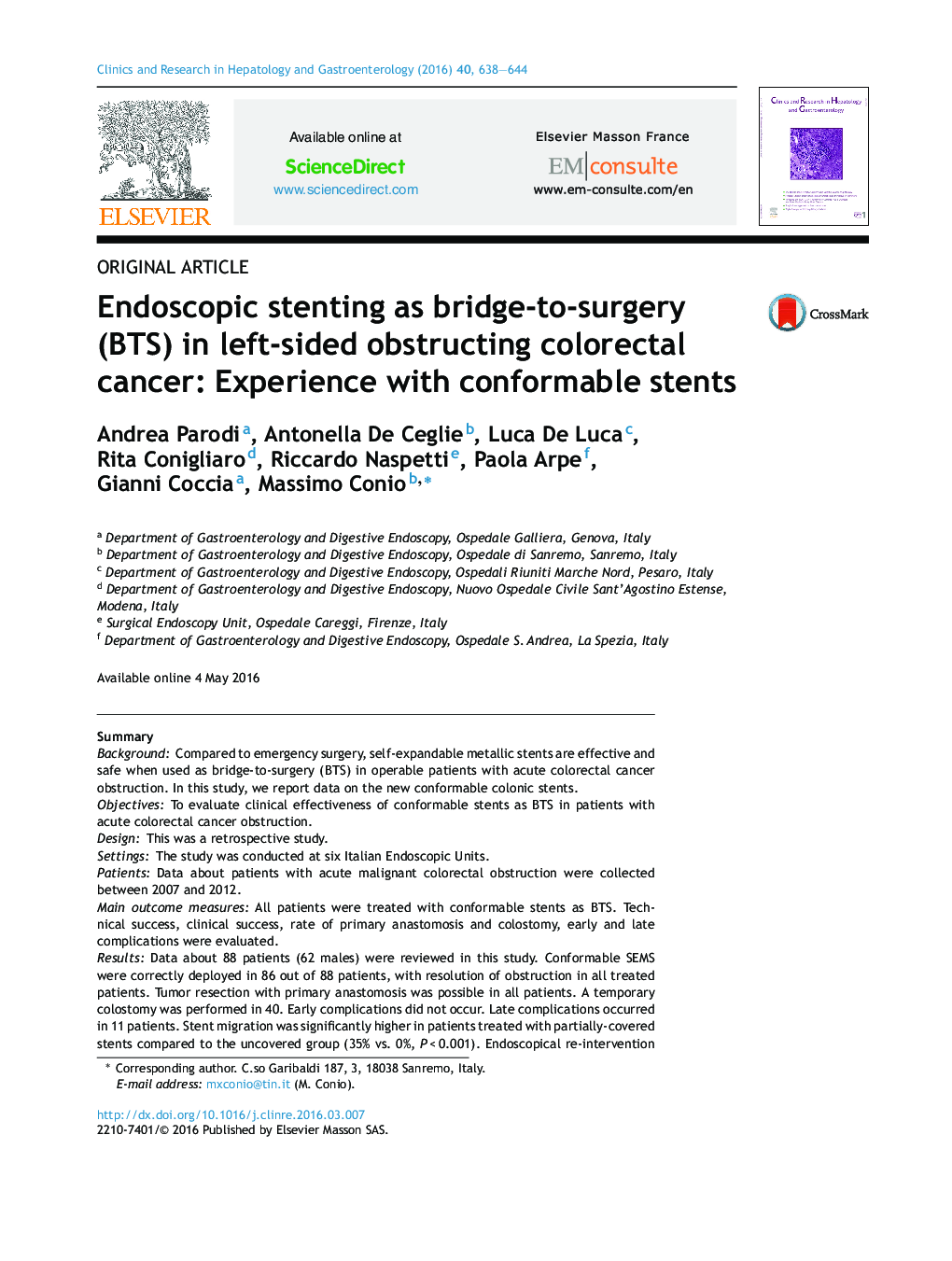| Article ID | Journal | Published Year | Pages | File Type |
|---|---|---|---|---|
| 5657772 | Clinics and Research in Hepatology and Gastroenterology | 2016 | 7 Pages |
SummaryBackgroundCompared to emergency surgery, self-expandable metallic stents are effective and safe when used as bridge-to-surgery (BTS) in operable patients with acute colorectal cancer obstruction. In this study, we report data on the new conformable colonic stents.ObjectivesTo evaluate clinical effectiveness of conformable stents as BTS in patients with acute colorectal cancer obstruction.DesignThis was a retrospective study.SettingsThe study was conducted at six Italian Endoscopic Units.PatientsData about patients with acute malignant colorectal obstruction were collected between 2007 and 2012.Main outcome measuresAll patients were treated with conformable stents as BTS. Technical success, clinical success, rate of primary anastomosis and colostomy, early and late complications were evaluated.ResultsData about 88 patients (62 males) were reviewed in this study. Conformable SEMS were correctly deployed in 86 out of 88 patients, with resolution of obstruction in all treated patients. Tumor resection with primary anastomosis was possible in all patients. A temporary colostomy was performed in 40. Early complications did not occur. Late complications occurred in 11 patients. Stent migration was significantly higher in patients treated with partially-covered stents compared to the uncovered group (35% vs. 0%, PÂ <Â 0.001). Endoscopical re-intervention was required in 12% of patients. One patient with rectal cancer had an anastomotic dehiscence after surgery and he was successfully treated with endoscopic clipping. One year after surgery, all patients were alive and local recurrence have not been documented.LimitationsThis was a retrospective and uncontrolled study.ConclusionsPreliminary data from this large case series are encouraging, with a high rate of technical and clinical success and low rate of clinically relevant complications. Partially-covered SEMS should be avoided in order to reduce the risk of endoscopic re-intervention.
